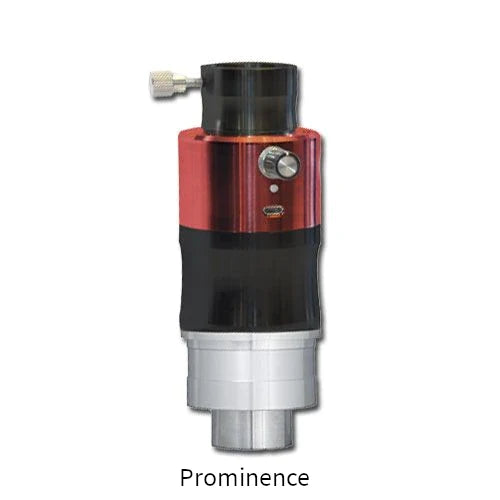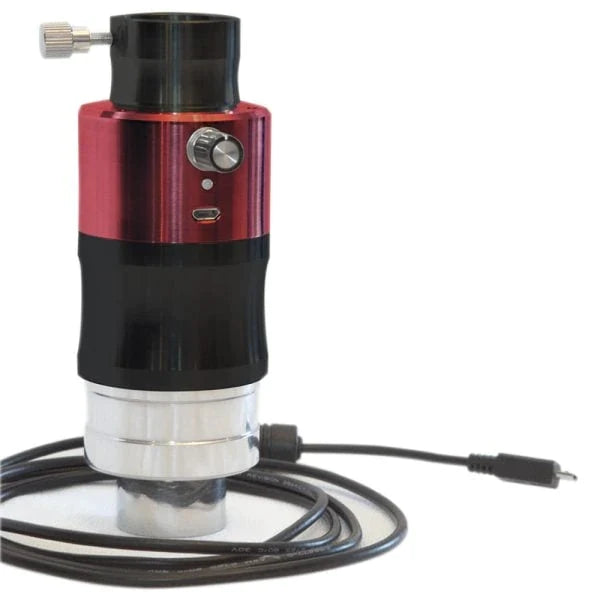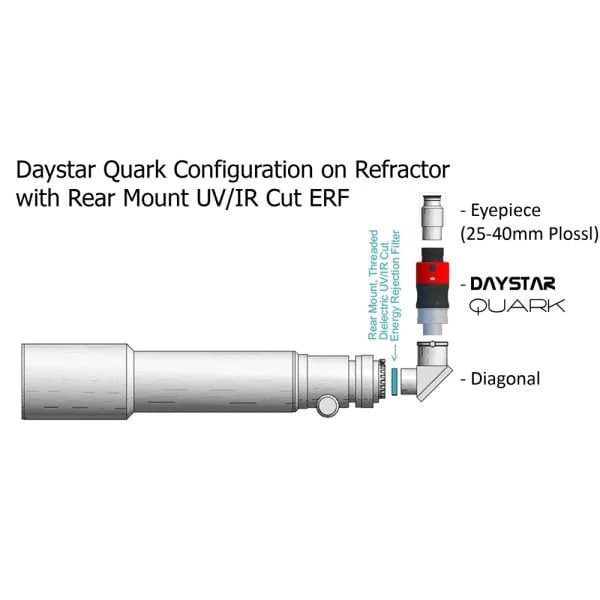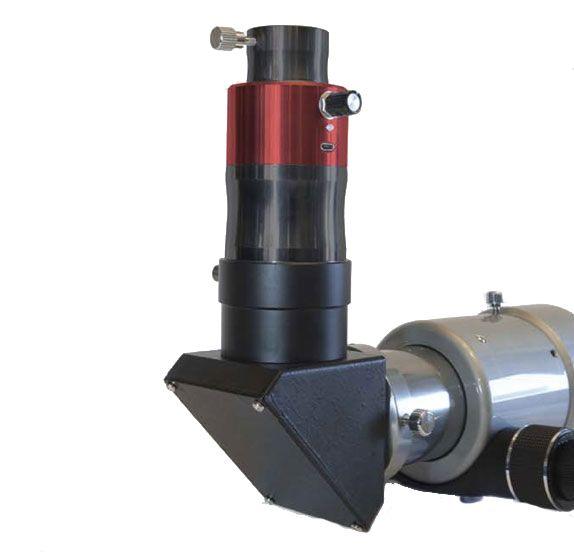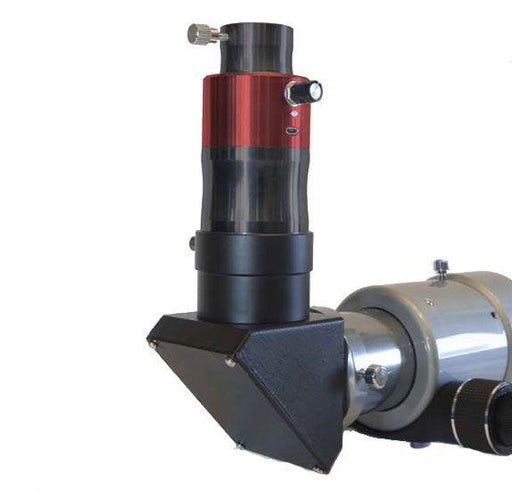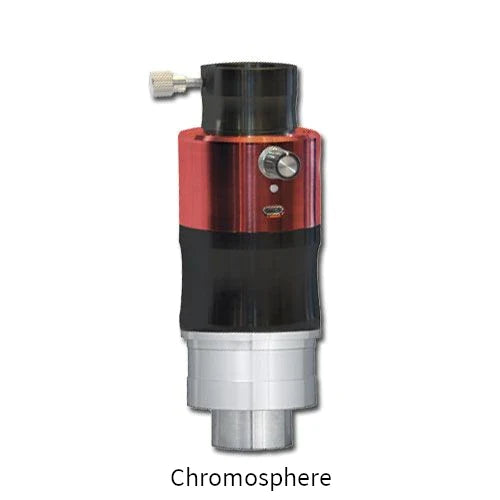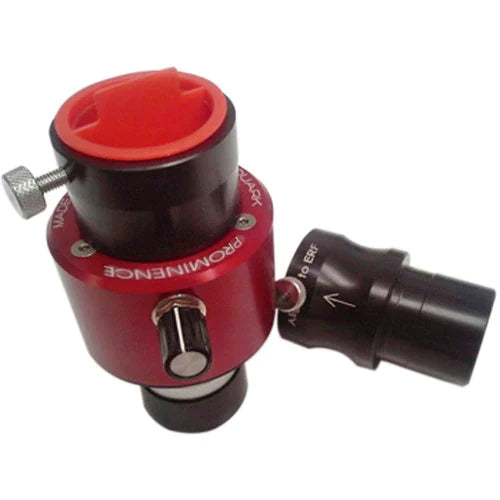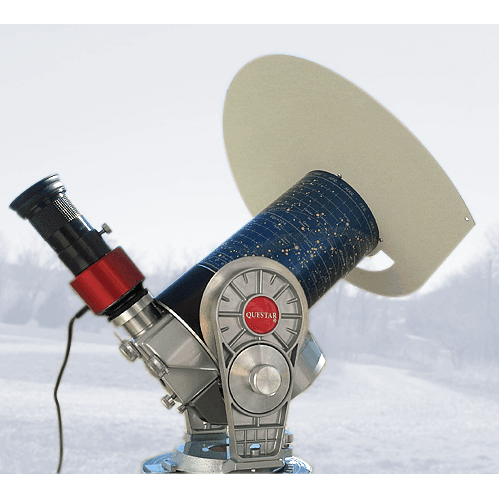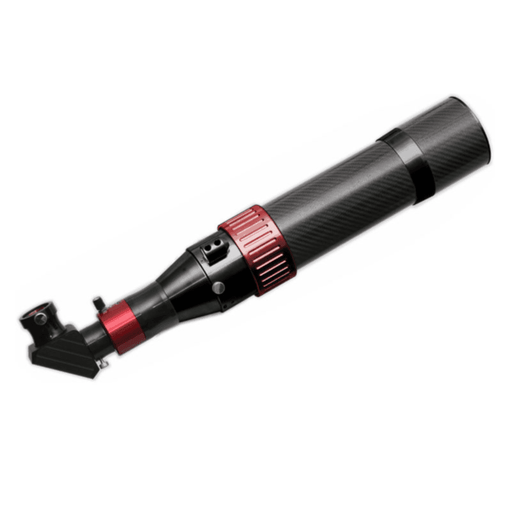Filtre H-alpha Daystar Quark Prominence
Le filtre H-alpha Daystar Quark Prominence associe des composants de haute qualité d'un barlow télécentrique, des adaptateurs, des museaux et un filtre alpha à hydrogène Daystar en un seul assemblage simple.
Quark* est disponible dans un choix de « proéminence » ou « chromosphère ».
La bande passante exacte du filtre variera en fonction de l'application finale du télescope, de sorte que les assemblages QUARK* sont qualifiés pour montrer la proéminence ou la surface (chromosphère). Aucune bande passante FWHM spécifique n'est désignée. Désormais, les observateurs peuvent acheter un filtre en fonction de leurs objectifs d'observation souhaités au lieu de leur budget. Choisissez des proéminences PLUS LARGES avec un peu de surface ou PLUS de contraste de surface (Chromosphère) et des proéminences plus étroites. Les deux sont disponibles pour le même prix bas!
Tous les assemblages de filtres DayStar Hydrogen a appliqués sur des télescopes de plus de 80 mm d'ouverture doivent être utilisés en conjonction avec un filtre de rejet d'énergie.
- Embouts d'oculaire combinés de 1,25″ ou 2,0″ avec fente de retrait de sécurité directement dans votre diagonale
- Sortie standard du tube de traction de l'oculaire 1,25 avec accessoires 2″ et SCT en option disponibles.
- Anneau de compression en laiton pour protéger l'oculaire.
- Utilise l'alimentation USB, 5v 1.5amp
- Comprend un adaptateur mural 90-240VAC avec des adaptateurs de prise internationaux.
- Le bouton de réglage permet un changement d'aile de +/- 0,5Ã avec des crans tous les 0,1Ã
- Indicateur LED pour alimentation, réchauffement, prêt, défaut
- Garantie 5 ans,
- Batterie de 8 heures disponible en option.
- Barlow télécentrique 4.2X intégré à 2 éléments entièrement déconcertés optimisé pour 656 nm
- Filtre de blocage intégré de 12 mm
- Ouverture du filtre clair de 21 mm
- Meilleures performances avec les réfracteurs F/4 – F/8
- Visualisation complète du disque possible sur les réfracteurs jusqu'à ~450 mm de distance focale
- Aucune limitation d'ouverture. Peut être utilisé sur des réfracteurs plus grands pour des vues à plus fort grossissement
- Livré dans un étui Twist-Case pratique pour un stockage sûr et sans poussière.
- Ne convient pas aux applications hors axe.
Pour une utilisation sur des réfracteurs de F/4 à F/8**, l'utilisateur n'a pas à se soucier des configurations. Insérez simplement dans votre diagonale, ajoutez un oculaire et visualisez.
Le QUARK* en instance de brevet contient une lentille barlow télécentrique Daystar Instruments 4.2X personnalisée entièrement optimisée dans les revêtements et la conception optique spécifiquement pour la longueur d'onde Alpha de l'hydrogène. Cet objectif télécentrique hautement spécialisé offre une planéité de champ supérieure.
La conception entièrement optimisée élimine le besoin d'adaptateurs. Tout est combiné dans un seul appareil léger de la taille d'un oculaire. La nouvelle configuration de conception compacte élimine les composants inutiles, le poids et les coûts associés. Nous avons même réduit la consommation d'énergie, de sorte que le Quark* peut désormais fonctionner toute la journée avec une petite batterie optionnelle de la taille d'une paume. Des déflecteurs ont été ajoutés pour augmenter le contraste et les revêtements AR sont optimisés pour la longueur d'onde de 656 nm.
*L'ensemble QUARK* est un produit de DayStar Instruments, utilisant la technologie étalon Fabry Perot de DayStar Filters.
** Les filtres QUARK peuvent être utilisés à des rapports focaux plus courts et plus longs que recommandés. Les rapports F de F/9 et plus offriront une vue visuelle plus sombre et peuvent n'être suffisamment lumineux que pour les applications photographiques. Les rapports F inférieurs à F/4 seront plus lumineux, mais élargiront également les performances de bande passante FWHM efficaces du filtre QUARK.
